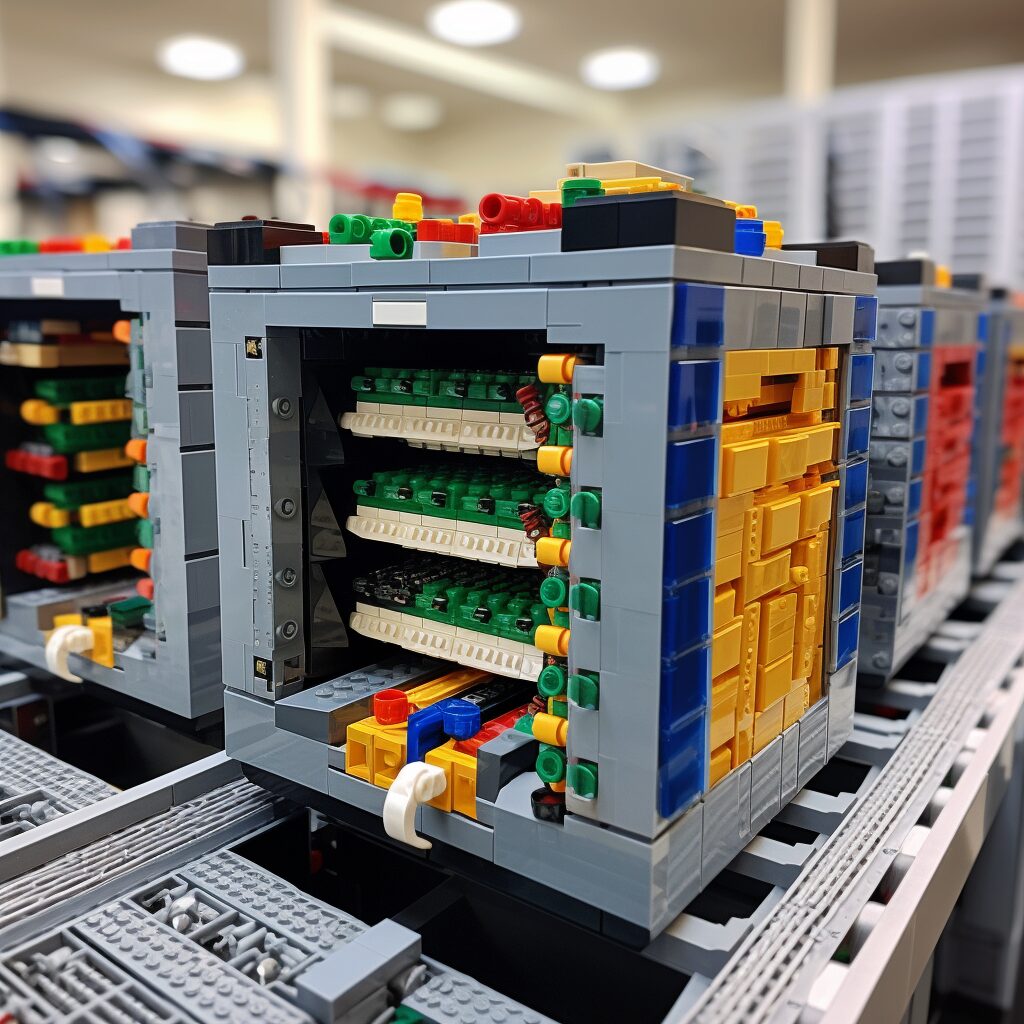Kubernetes, a powerful orchestration platform for containerized applications, has taken the tech world by storm. As companies increasingly adopt this technology, Kubernetes-related skills have become highly sought after. If you're prepping for an interview, here's a comprehensive list of Kubernetes interview questions to help you shine.
1. What is Kubernetes?
Kubernetes, also known as K8s, is an open-source system designed to automate deployment, scaling, and management of containerized applications. Developed by Google, it's based on their experience running billions of containers a week.
2. How does Kubernetes differ from Docker?
While both Docker and Kubernetes are pivotal in the containerization ecosystem, they serve different purposes. Docker provides a platform for containerization, whereas Kubernetes is an orchestration platform for managing and scaling those containers.
3. What is a Pod in Kubernetes?
A Pod is the smallest deployable unit in Kubernetes that can be created and managed. It encapsulates one or more containers, storage resources, a unique network IP, and options that govern how the container(s) should run.
4. Describe a Kubernetes Node.
A Node is a worker machine, VM, or physical computer where Kubernetes runs containers. Nodes contain the necessary services to manage the networking between containers, communicate with the master node, and assign resources to the containers scheduled on them.
5. What is the role of Kubelet?
Kubelet is an agent that runs on each node in the cluster. It ensures that all containers are running in a Pod.
6. Explain the significance of ConfigMaps and Secrets in Kubernetes.
ConfigMaps allow you to decouple environment-specific configuration from your container images, making your applications more portable. Secrets, on the other hand, let you store and manage sensitive information, like passwords or API keys.
7. What are Kubernetes Services?
Services in Kubernetes are an abstract way to expose an application running on a set of Pods as a network service. They enable communication between Pods, with the outside world, or both.
8. Can you explain the role of a Replication Controller?
A Replication Controller ensures that the specified number of replicas for a Pod are maintained at all times. If a Pod fails, the Replication Controller replaces it to maintain the desired count.
9. What is Helm in the Kubernetes context?
Helm is a package manager for Kubernetes. It allows developers and operators to package, configure, and deploy applications and services onto Kubernetes clusters.
10. How does Kubernetes achieve auto-scaling?
Kubernetes provides Horizontal Pod Autoscaling, which automatically scales the number of pods in a deployment or replica set based on observed CPU utilization or other select metrics.
11. What is a Kubernetes Namespace?
A Namespace is a way to divide cluster resources between multiple users. It provides scope for names and can be used
to hold sets of resources for different projects, teams, or environments like dev, test, and prod.
12. What are Labels and Selectors in Kubernetes?
Labels are key-value pairs associated with resources, like pods and services, to organize them based on user-defined criteria. Selectors, on the other hand, are a way to select a group of resources using labels. They play a crucial role in how services target pods or how a Replication Controller manages pods.
13. How does Kubernetes handle failures?
Kubernetes is designed with fault tolerance in mind. If a node fails, the ReplicaSet ensures that the desired number of replicas are maintained, creating new pods on other nodes if necessary. Similarly, if an application crashes, Kubernetes can restart it. Load-balancers distribute traffic ensuring that no single point of failure exists.
14. Can you explain Persistent Volumes (PV) and Persistent Volume Claims (PVC)?
PVs are storage resources in a cluster, decoupled from the lifecycle of pods. PVCs, on the other hand, are requests for those storage resources. A user creates a PVC specifying storage size and access mode, and Kubernetes binds it to a suitable PV.
15. What is a StatefulSet in Kubernetes?
StatefulSet is a workload API object used to manage stateful applications. It manages the deployment and scaling of a set of Pods and provides ordering and uniqueness for them. It’s especially useful for applications like databases that require a stable hostname and persistent storage.
16. How does rolling deployment work in Kubernetes?
A rolling deployment gradually replaces the previous version of a pod with a new one. Kubernetes ensures zero downtime by creating a new pod first, waiting for it to be ready, and then terminating an old pod. This way, the application remains available throughout the entire update process.
17. What is an Ingress in Kubernetes?
Ingress is an API object that manages external access to services within a cluster. It provides HTTP and HTTPS routing to services based on hostnames or URL paths and can also handle SSL/TLS termination.
18. Explain the importance of etcd in a Kubernetes cluster.
etcd is a consistent and highly-available key-value store used by Kubernetes as its primary data store. It stores all
cluster data, including the configuration data and current state. It's vital for Kubernetes' distributed nature,
allowing multiple nodes to coordinate and agree upon the state of the system.
19. What is the difference between a Job and a CronJob in Kubernetes?
A Job creates one or more pods and ensures that a specified number of them successfully complete. Once the tasks are done, the Job is finished. A CronJob, however, manages time-based Jobs, running them on a fixed schedule, much like cron in Unix-based systems.
20. How can you monitor the performance of a Kubernetes cluster?
There are several tools and integrations available for monitoring Kubernetes. Prominent among them is Prometheus, an
open-source monitoring solution that can track cluster performance in real-time. Integrations with Grafana can
provide visual dashboards, and tools like cAdvisor or kube-state-metrics can provide detailed metrics from the
cluster.
21. What is the role of a Service Account in Kubernetes?
A Service Account represents processes, not humans. It provides an identity for processes running in a Pod, allowing them to interact with the Kubernetes API. Service accounts are namespaced and can be assigned privileges using role-based access control (RBAC).
22. What is a Taint and Tolerations in Kubernetes?
Taints are applied to nodes, marking them to repel a set of pods. Tolerations, on the other hand, are applied to pods and allow them to be scheduled on nodes with matching taints. Together, they ensure that specific pods run on suitable nodes.
23. Can you describe a DaemonSet?
A DaemonSet ensures that an instance of a specific pod runs on all nodes (or some nodes following a selection criterion). It's commonly used for deploying system daemons like log collectors, monitoring agents, or storage daemons.
24. What is the difference between a Deployment and a Pod?
While both are fundamental concepts in Kubernetes, a Pod is the smallest deployable unit that can run one or more containers, while a Deployment is a higher-level concept that manages the desired state of Pods. Deployments can update Pods, handle scaling, and provide rolling updates.
25. What are Kubernetes Probes?
Probes are diagnostic tools used by Kubernetes to check the health of Pods. There are three types:
- Liveness Probe: Checks if the application in the Pod is running. If it fails, the Pod is killed.
- Readiness Probe: Checks if the application is ready to serve traffic. If it fails, traffic isn't sent to the Pod.
- Startup Probe: Checks if the application within the Pod has started up.
26. How do you update a running Kubernetes application?
Using rolling updates. By default, Kubernetes deployments use a rolling update mechanism to update an application without any downtime. New replicas are created with the updated version, and old ones are gradually terminated.
27. What's the purpose of a Kubernetes Operator?
An Operator extends Kubernetes to automate the deployment, scaling, and management of complex, stateful applications. It uses custom resources and encapsulates application-specific operational knowledge.
28. How does Network Policy in Kubernetes work?
A Network Policy defines how Pods communicate with each other and other network endpoints. By default, Pods can communicate without restrictions. Network Policies allow you to restrict connections, enhancing cluster security.
29. What is kubectl?
kubectl is a command-line tool provided by Kubernetes to interact with the cluster. It allows users to run commands
against clusters for deploying applications, inspecting resources, viewing logs, and more.
30. Explain the concept of Affinity and Anti-Affinity in Kubernetes.
Affinity and Anti-Affinity rules define how pods are placed relative to other pods. Affinity rules encourage or enforce pod placement on nodes (either on the same node or different ones) based on specified criteria, while Anti-Affinity rules discourage or prevent the placement. It helps in ensuring high availability, optimizing resource usage, and more.
Conclusion
Kubernetes has revolutionized how applications are deployed and managed in a cloud environment. As its adoption continues to soar, it's essential for tech professionals to understand its ins and outs. This list of Kubernetes interview questions is just the starting point. To truly master Kubernetes, one must dive deep, practice, and engage with its vast community.




